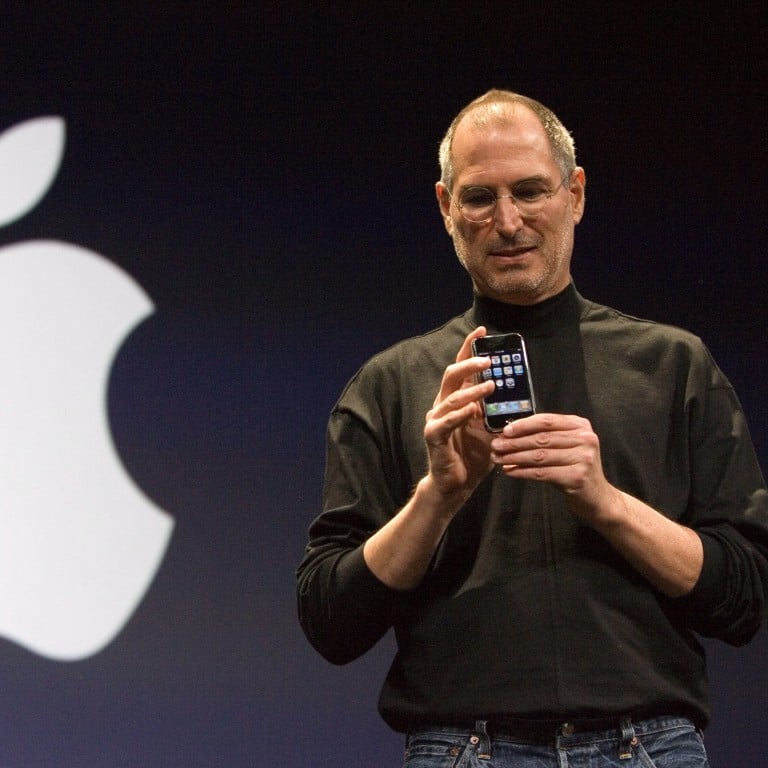
Why Steve Jobs’ anti-fashion philosophy is hard to pull off on a budget
The late Apple founder’s wardrobe of 100 Issey Miyake black turtlenecks and jeans is appealingly simple, but 30 identical H&M T-shirts don’t cut the mustard
Before we all get clucky, I should say that recent empirical evidence out of China, which has experienced the worst of the quarantine, shows the opposite scenario is almost as likely. When quarantine in places such as Xian ended, there was a spike in divorces among couples who had been spending too much time together.
In between TV and lovemaking/fighting, there will be lots of time for chores. Once all the fun stuff gets boring, well, you’ll have nothing left. In recent weeks, I have spent a lot of time reorganising my wardrobe, something I presume most people hate doing. I have far too many clothes, not because I am a clothes horse, but because I refuse to throw things away.
I have things that were given to me and will never fit, even if I followed the most optimistic diet plan; things I must have bought while I was having a stroke – they are just mind-bogglingly awful; things that have holes I never bothered to mend; and things I bought online while drunk that don’t fit or that look bad but I was too embarrassed or lazy to return. Then there are things that are testimonies to failed experiments.

The failed experiments are many, but I want to tell you about one in particular, which began with Steve Jobs and my mate Ben. For those who aren’t familiar with the late Apple founder’s sense of fashion, well, it was the opposite of “fashion”. He wore the same dad-core outfit every day: a black Issey Miyake turtleneck jumper, Levi’s 501 blue jeans and New Balance trainers. According to biographer Walter Isaacson, Jobs had Miyake make him 100 of the famed black turtlenecks so he would never have to think about clothes again and could focus on finding clever ways to make people like me part with their money.
I was vaguely aware of the sartorial aspect of Jobs’ story, and his ideas appealed as they seemed so liberating, but I didn’t have the kind of money to buy 100 – or even 10 – high-quality, expensive garments in the same style. I didn’t know anyone who followed his principles until Ben revealed he would buy two, or more, of anything he really liked, even cheap stuff that wouldn’t necessarily last long. Wallets, jeans, shoes, jackets … Ben would go for the Noah’s wardrobe approach of two of everything, and he was a convincing advocate.
Inspired by Jobs’, let’s be honest, slightly sociopathic model and egged on by winsome Aussie larrikin Ben, I decided to forge my own path – rigid uniformity with a bit of flair and, most importantly, within my budget. A sort of Jobs-for-the-boys-with-no-money approach. My totem item was a plain T-shirt from H&M called the “Fancy”, a HK$150 item that came in two colours, navy and black, and had a delicious faux silk neckline for a touch of élan. I had bought one earlier and enjoyed wearing it, so indoctrinated by a new philosophy and the Christmas sales (reduced to HK$30!) I filled my Fancy boots and bought 29 more. Imagine, 30 Fancy shirts, one for each day of the month for a total spend of just over HK$1,000. I was cock-a-hoop.
What happened next, alas, is a cautionary tale on the risks of buying fast fashion, especially in bulk – and it pains me to this day. After a Fancy month of fashion nirvana, I had cycled through the 30 shirts and it had come time to wash them. When I did, they lost all sense of Fancy. The colours were no longer as vibrant, the shirts had shrunk and, horror of horrors, the faux silk neckline had started to bobble. The next wash cycle, then the third and fourth, only made things worse. After 120 days, the Fancy experiment was called off.
I have charity-binned my Fancy hoard; maybe the frayed necklines will bring joy to someone somewhere. My great hope is that they will find a home together, all 30 of them. As for me, I learned my lessons the hard way: never bulk-buy fast fashion, avoid clothing with names like Fancy, don’t copy Steve Jobs – and never listen to Ben.
Purchase the China AI Report 2020 brought to you by SCMP Research and enjoy a 20% discount (original price US$400). This 60-page all new intelligence report gives you first-hand insights and analysis into the latest industry developments and intelligence about China AI. Get exclusive access to our webinars for continuous learning, and interact with China AI executives in live Q&A. Offer valid until 31 March 2020.

